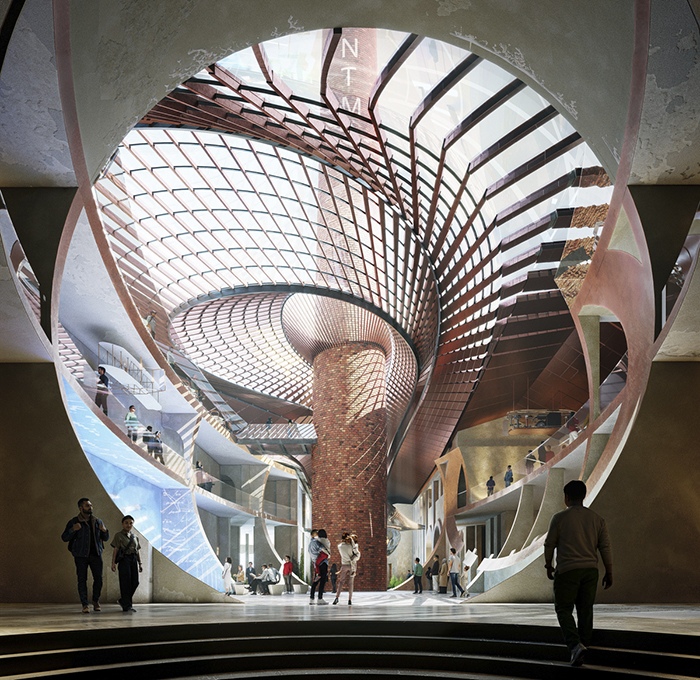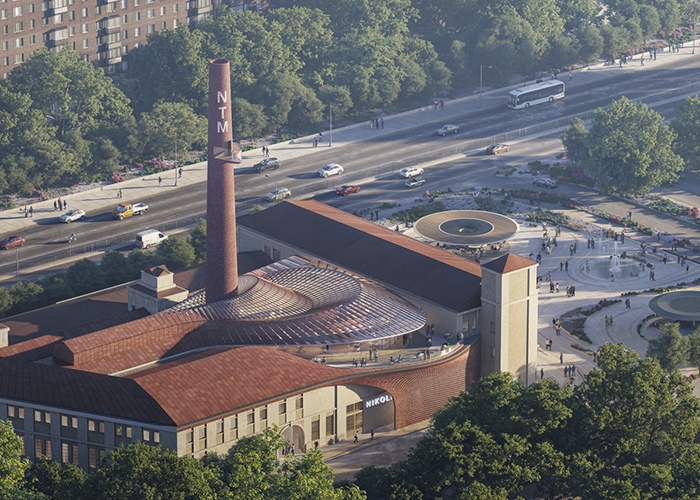
Honoring Tesla's Enduring Legacy While Revitalizing Belgrade's Industrial Heritage ur Heading Text Here
Belgrade is set to welcome a transformative cultural landmark: the Nikola Tesla Museum. A collaboration between the world-renowned Zaha Hadid Architects (ZHA) and Serbia’s Bureau Cube Partners has won the international competition to reimagine the historic Milan Vapa Paper Mill. This visionary project will celebrate Tesla’s life and work while preserving Belgrade’s architectural legacy.
Nikola Tesla: Illuminating the Modern World
Nikola Tesla (1856–1943) was a trailblazer whose groundbreaking work in electrical engineering reshaped modern technology. A Serbian-American visionary, Tesla revolutionized power generation with alternating current (AC) systems, which remain the backbone of global electricity networks. His prolific career also gave rise to the Tesla coil, foundational advancements in wireless communication, and concepts that anticipated radio, radar, and remote control.
Despite being underappreciated in his later years, Tesla’s genius is now widely celebrated, inspiring innovations in robotics, renewable energy, and quantum computing. The Nikola Tesla Museum seeks to honor this legacy, offering an immersive exploration of his life and the transformative impact of his ideas.
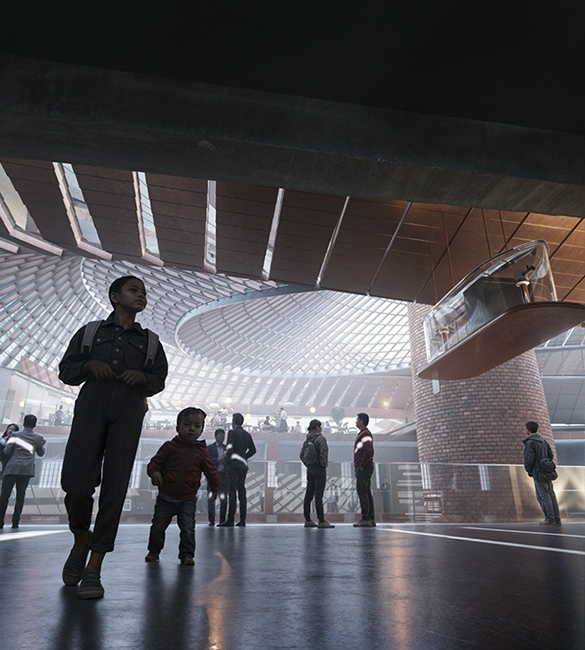
A New Chapter for the Milan Vapa Paper Mill
The museum’s location, the historic Milan Vapa Paper Mill, was built in 1924 as Serbia’s first modern factory and symbolized the country’s industrial progress. After decades of use and eventual disuse, the mill was designated a cultural monument by the Belgrade Institute for the Protection of Cultural Monuments. Its adaptive reuse as the Nikola Tesla Museum reflects a powerful commitment to preservation and reinvention, funded by the Belgrade Waterfront initiative.
A Design Inspired by Tesla’s Genius
The winning design by ZHA and Bureau Cube Partners draws directly from Tesla’s research into magnetic fields and wireless energy. Dynamic, elliptical curves radiate outward from the mill’s original chimney, symbolizing the invisible forces Tesla spent his life studying.
Visitors will enter through a circular western façade, stepping into a dramatic triple-height central atrium. The preserved chimney anchors this space, while ellipsoidal openings carved into the original walls create interconnected pathways that guide visitors through the 13,400-square-meter museum. This journey culminates at a Tesla memorial in the eastern wing, merging architectural storytelling with historical tribute.
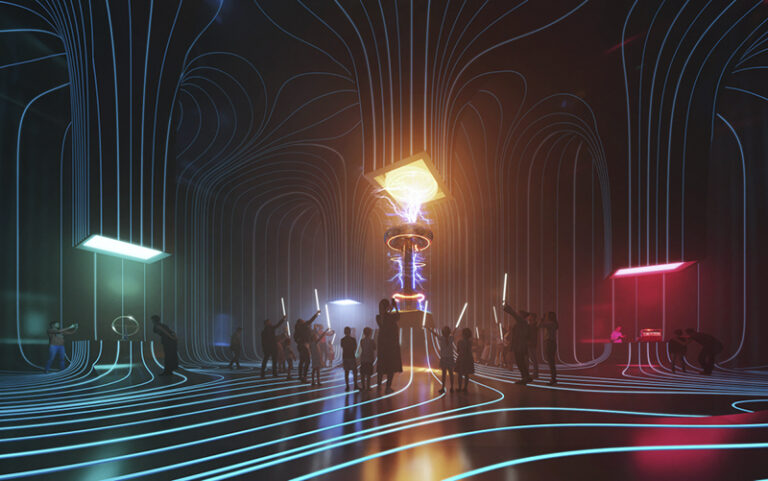
Experiencing Tesla’s Legacy
The museum will offer a multi-layered exploration of Tesla’s life and impact. Permanent galleries will feature personal artifacts, immersive displays, and interactive exhibits, providing both historical context and hands-on learning opportunities. Rotating exhibitions will ensure fresh perspectives, encouraging repeat visits.
One highlight is the Tesla Electronic Transformer Gallery, which will feature a 12-million-volt transformer, evoking the awe Tesla’s experiments once inspired. Visitor amenities include a café, a rooftop restaurant with panoramic views of the Sava River, and a multipurpose hall for events, creating an inviting space for reflection and engagement.
Beyond the Museum: Nikola Tesla Square
The museum’s impact extends to its surroundings with the creation of Nikola Tesla Square, a public space inspired by Tesla’s fascination with electromagnetic fields. Designed with flowing pathways, gardens, and plazas, the square integrates seamlessly with the Belgrade Waterfront and city transit, offering both accessibility and a vibrant urban experience.
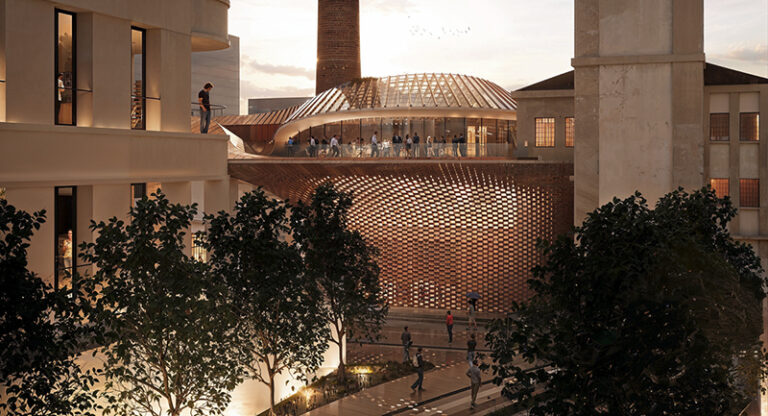
Sustainability at the Core
Tesla’s forward-thinking ethos is reflected in the project’s commitment to sustainability. Passive design strategies, renewable energy systems, and geothermal technologies minimize environmental impact. The meticulous restoration of the paper mill’s historic masonry, vaulted ceilings, and facades preserves its character while adapting it for contemporary use.
A Beacon of Innovation
The Nikola Tesla Museum is poised to become a cornerstone of Belgrade’s cultural and architectural identity. By marrying the city’s industrial heritage with Tesla’s transformative vision, it will stand as a symbol of creativity, progress, and human ingenuity.
The collaboration between Zaha Hadid Architects and Bureau Cube Partners brings Tesla’s spirit to life, offering a dynamic space for learning and inspiration. More than a repository of artifacts, the museum will invite visitors from around the globe to explore the enduring legacy of one of history’s greatest minds.
